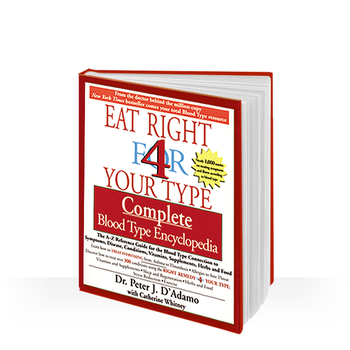A wikipedia of Dr. D'Adamo's research
See AlsoDescriptionAdenine is one of the two purine nucleobases used in forming nucleotides of the nucleic acids DNA? and RNA. In DNA, adenine binds to thymine? via two hydrogen bonds to assist in stabilizing the nucleic acid structures. In RNA, adenine binds to uracil, which is used in the cytoplasm for protein synthesis. It forms several tautomers, compounds that can be rapidly interconverted and are often considered equivalent. Guanine, a related compounds (also a purine derivative), forms tautomers in the same way, and has more detailed information too. Adenine forms adenosine, a nucleoside, when attached to ribose, and deoxyadenosine when attached to deoxyribose; it forms adenosine triphosphate (ATP), a nucleotide, when three phosphate groups are added to adenosine. Adenosine triphosphate is used in cellular metabolism as one of the basic methods of transferring chemical energy between chemical reactions. In older literature, adenine was sometimes called Vitamin B4. However it is no longer considered a true vitamin or part of Vitamin B. Some think that, at the origin of life on Earth, the first adenine was formed by the polymerizing of five hydrogen cyanide (HCN) molecules. LinksAttribution
|
COMPLETE BLOOD TYPE ENCYCLOPEDIA
The Complete Blood Type Encyclopedia is the essential desk reference for Dr. D'Adamo's work. This is the first book to draw on the thousands of medical studies proving the connection between blood type and disease. Click to learn more
Click the Play button to hear to Dr. Peter J. D'Adamo discuss .
|
The statements made on our websites have not been evaluated by the FDA (U.S. Food & Drug Administration).
Our products and services are not intended to diagnose, cure or prevent any disease. If a condition persists, please contact your physician.
Copyright © 2015-2023, Hoop-A-Joop, LLC, Inc. All Rights Reserved. Log In